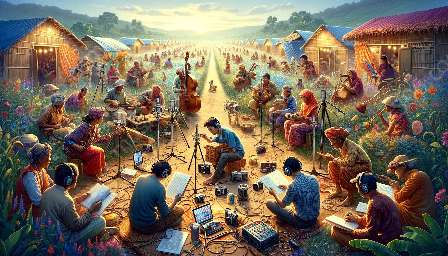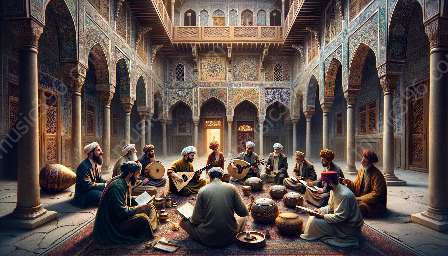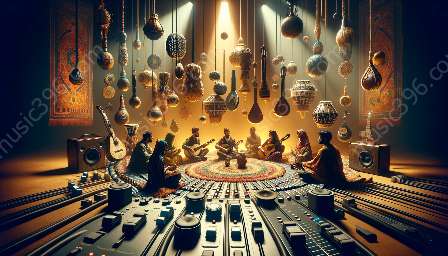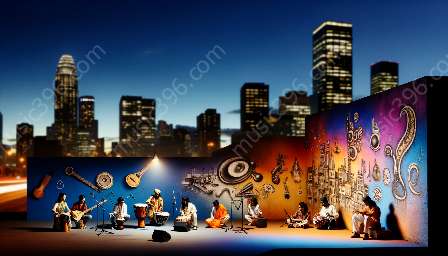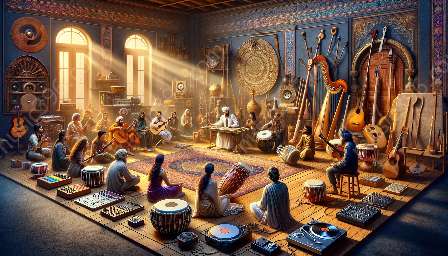Asian music traditions are diverse and rich, encompassing a wide array of styles, instruments, and cultural influences. From classical to folk, the music of Asia has a deep-rooted cultural significance and has greatly influenced world music history and ethnomusicology.
The Classical Music Traditions of Asia
One of the most prominent aspects of Asian music is its classical traditions. In countries such as India, China, and Japan, classical music has a long history and is deeply rooted in the cultural and spiritual practices of these societies. Indian classical music, for example, is known for its complex melodic and rhythmic structures, as well as its improvisational nature.
Similarly, Chinese classical music is characterized by its use of traditional instruments such as the guqin and pipa, and its emphasis on creating a sense of harmony with nature. In Japan, traditional music forms such as gagaku and shomyo have been preserved for centuries, reflecting the spiritual and ceremonial aspects of Japanese culture.
Folk Music and Traditional Instruments
Besides classical music, Asia boasts a wide variety of folk music traditions, each with its own unique styles and instruments. From the haunting melodies of Central Asian throat singing to the lively rhythms of Indonesian gamelan music, Asian folk music encompasses a vast spectrum of sounds and cultural expressions.
Traditional Asian instruments also play a central role in the region's music traditions. Instruments such as the sitar, tabla, shamisen, and erhu are not only musical tools but also embodiments of cultural heritage. Beyond their musical function, these instruments hold deep symbolic and spiritual significance within the respective cultures.
Cultural Significance and Influence
Asian music has had a profound influence on world music history and ethnomusicology. The intricate rhythms, exotic scales, and spiritual dimensions of Asian music have captured the imagination of composers and musicologists worldwide, leading to a fusion of Eastern and Western musical elements.
Moreover, the cultural significance of Asian music extends beyond mere entertainment. In many Asian societies, music is deeply intertwined with rituals, ceremonies, and everyday life, reflecting the spiritual, social, and historical fabric of these cultures.
Exploring Asian Music Today
Today, the legacy of Asian music traditions continues to thrive, with contemporary artists blending traditional elements with modern innovations. From the global popularity of Bollywood music to the resurgence of traditional Japanese taiko drumming, Asian music is evolving and adapting to the modern world while staying true to its heritage.
Overall, Asian music traditions offer a captivating window into the rich cultural tapestry of the region, and their exploration provides valuable insights into the diverse musical expressions that have shaped the world we live in today.
Topic
Historical Evolution of Traditional Asian Music
View details
Key Components and Structures of Traditional Asian Music
View details
Role of Traditional Music in Asian Societal Events and Rituals
View details
Influences of Traditional Asian Music on Modern Music Genres
View details
Cultural and Historical Contexts of Traditional Asian Musical Instruments
View details
Diversity of Asian Cultures Reflected in Music Traditions
View details
Religious and Spiritual Connections in Traditional Asian Music
View details
Gender Roles and Representations in Traditional Asian Music
View details
Globalization's Impact on Traditional Asian Music
View details
Preservation and Maintenance of Traditional Asian Music Traditions
View details
Comparative Analysis of Traditional Music Across Asian Regions
View details
Influence of Traditional Asian Music on Popular Culture and Media
View details
Philosophical and Aesthetic Underpinnings of Traditional Asian Music
View details
Technology's Impact on Documentation and Preservation of Traditional Asian Music
View details
Social and Political Implications of Traditional Asian Music Traditions
View details
Connections Between Traditional Asian Music and Dance Forms
View details
Intersections of Traditional Asian Music and Poetry
View details
Theoretical Frameworks in Ethnomusicological Studies of Traditional Asian Music
View details
Impact of Colonization on Traditional Asian Music Traditions
View details
Narratives and Storytelling Elements in Traditional Asian Music
View details
Addressing Themes of Nature and Environment in Traditional Asian Music
View details
Expression of Emotions and Affective Experiences in Traditional Asian Music
View details
Healing and Therapeutic Aspects of Traditional Asian Music
View details
Improvisational and Collaborative Practices in Traditional Asian Music
View details
Oral and Written Traditions in the Transmission of Traditional Asian Music
View details
Regional Variations in Traditional Asian Music Instruments and Ensembles
View details
Engagement with Concepts of Time and Space in Traditional Asian Music
View details
Folk and Indigenous Influences in Traditional Asian Music
View details
Addressing Issues of Identity and Belonging in Traditional Asian Music
View details
Role of Traditional Asian Music Festivals in Preserving Cultural Heritage
View details
Adaptation to Contemporary Social and Technological Changes in Traditional Asian Music
View details
Questions
How did traditional Asian music evolve over time?
View details
What are the key components of traditional Asian music?
View details
What role does traditional music play in Asian societal events and rituals?
View details
How does traditional Asian music differ from Western music in terms of structure and performance?
View details
What are the influences of traditional Asian music on modern music genres?
View details
What are the cultural and historical contexts of traditional Asian musical instruments?
View details
How do Asian music traditions reflect the diversity of Asian cultures?
View details
What are the religious and spiritual connections found in traditional Asian music?
View details
What are the gender roles and representations in traditional Asian music performances?
View details
How has globalization affected the preservation and dissemination of traditional Asian music?
View details
What are the contemporary trends in the performance and composition of traditional Asian music?
View details
How are traditional Asian music traditions preserved and maintained in the face of modernization?
View details
What are the similarities and differences between traditional music in different Asian regions?
View details
How has traditional Asian music influenced popular culture and media?
View details
What are the philosophical and aesthetic underpinnings of traditional Asian music?
View details
How has technology impacted the documentation and preservation of traditional Asian music?
View details
What are the social and political implications of traditional Asian music traditions?
View details
What are the connections between traditional Asian music and dance forms?
View details
How are traditional Asian music and poetry intertwined?
View details
What are the theoretical frameworks used in ethnomusicological studies of traditional Asian music?
View details
How has colonization impacted traditional Asian music traditions?
View details
What are the narratives and storytelling elements present in traditional Asian music compositions?
View details
How do traditional Asian music traditions address themes of nature and environment?
View details
How do traditional Asian music traditions express emotions and affective experiences?
View details
What are the healing and therapeutic aspects of traditional Asian music?
View details
What are the improvisational and collaborative practices in traditional Asian music performances?
View details
How are traditional Asian music traditions passed down through oral and written traditions?
View details
What are the regional variations in traditional Asian music instruments and ensembles?
View details
How do traditional Asian music performances engage with concepts of time and space?
View details
What are the folk and indigenous influences in traditional Asian music?
View details
How do traditional Asian music traditions address issues of identity and belonging?
View details
What role do traditional Asian music festivals play in preserving and celebrating cultural heritage?
View details
How are traditional Asian music traditions adapting to contemporary social and technological changes?
View details


